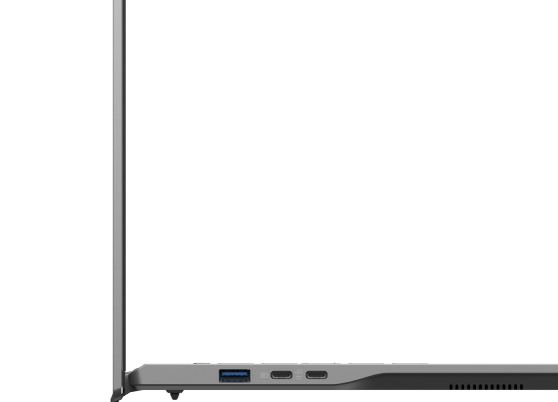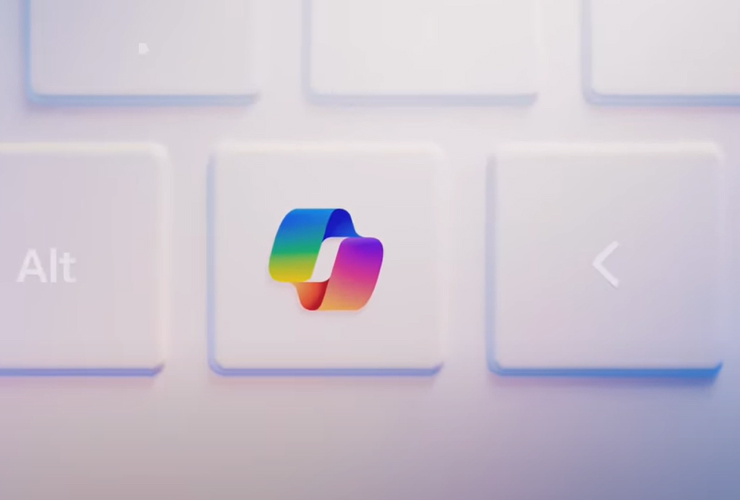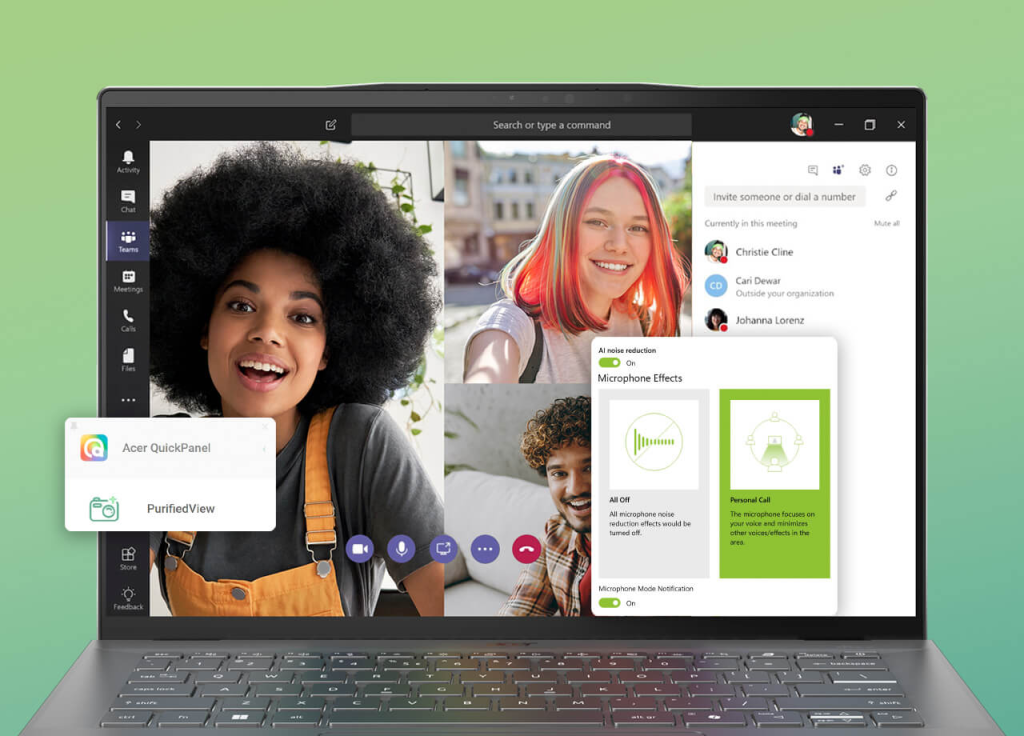The Acer Swift 14 AI is a notebook that arrives with a bold promise: offering next-generation productivity with lightweight design, great autonomy, and artificial intelligence features. Equipped with Intel Core Ultra processors and a vibrant OLED display, it’s aimed at mobile professionals, students, and occasional creators who prioritize portability.
But does the integrated AI really add value? We analyze it thoroughly after more than a month of real use and exhaustive technical testing.
Design and construction: Attractive minimalism with room for improvement
The Swift 14 AI’s design is sober but modern, with a magnesium alloy chassis in reflective gray tone that conveys quality. Its slim profile and weight under 1.4 kg make it an ideal companion for daily transport.

It can be easily opened with one hand thanks to a small relief on the lid, although the hinges show some play that can produce an annoying flickering effect under certain lights.
Connectivity is well covered with two Thunderbolt 4 ports, HDMI 2.1, two USB-A ports, and audio jack, although the absence of an SD reader is a notable omission for creators. A plastic frame around the display reveals that we’re not dealing with a premium notebook, despite its pretensions.
Pros
Lightweight, sober and robust design
Good port selection for productivity
Surface that resists fingerprints
Cons
No SD card reader
Unstable hinges that create flickering
Plastic frame that betrays its positioning
Performance and features: Surprising graphics, disappointing AI
The model we tested integrates an Intel Core Ultra 7 with 32 GB of RAM (non-expandable) and a replaceable 1 TB SSD. In everyday tasks and smooth multitasking, it responds well. However, its scores in tests like Geekbench multicore are moderate due to Intel’s elimination of hyper-threading. This device consumes more power than others with the same processor but performs less, suggesting pending optimizations.
Where it genuinely shines is in graphics performance: the integrated Arc 140V GPU offers excellent results for its category. It’s capable of handling light creative tasks and local AI image generation with times comparable to mid-range dedicated graphics cards.

AI functions, on the contrary, are more decorative than functional. The dedicated Copilot button or the AI indicator on the trackpad provide little real value. Most tasks run in the cloud, and the NPU (neural processing unit) is rarely activated. AI filters for the webcam (“Super Sharp”, “Portrait Refinement”) actively worsen image quality.
Find out which are the best AI creativity tools in 2025.
Pros
Excellent integrated graphics performance
Capable of light creative tasks and casual gaming
Good overall thermal management
Cons
Limited multicore CPU performance
Poorly developed or counterproductive AI functions
Fans with fluctuating noise and high pitch
Display and visual experience: Impressive but problematic
The OLED display stands out as one of the most striking components. With vibrant colors, good brightness, and HDR support, it offers an excellent visual experience for work and entertainment. The 90Hz refresh rate provides smoothness in daily use that’s especially noticeable when scrolling through documents or web pages.

However, it’s extremely reflective, making it practically unusable outdoors or with intense light. More problematic is that the refresh rate is not variable: maintaining 90Hz consumes significantly more battery than the default 60Hz, and switching between them requires accessing system settings.
Pros
Vibrant OLED panel with excellent colors
HDR support and good maximum brightness
90Hz frequency that provides smoothness
Cons
Extremely reflective outdoors
No adaptive refresh rate
Manual configuration required to optimize battery
Battery and efficiency: Outstanding autonomy for long days
The Swift 14 AI’s 63Wh battery stands out as its greatest strength. In our tests, it reached over 20 hours of continuous video playback, the best result recorded on any Windows notebook we’ve tested. In real mixed use with streaming, browsing, and documents, we expect between 12-16 hours depending on display configuration.
Even under intense load like sustained benchmarks, consumption remains notably low thanks to the Lunar Lake processor’s efficiency. The laptop can easily last 2 or 3 days with light work without needing to charge.
Pros
Exceptional autonomy in any scenario
Outstanding energy efficiency
Fast 65W charging via USB-C
Cons
Maximum autonomy requires sacrificing display frequency
Modest battery on paper compared to competitors
User experience: Daily comfort with problematic software
The backlit keyboard provides an outstanding experience. The keys are wide, with good travel and solid feel without being noisy, offering one of the best typing experiences in its category. The only inconvenience is the power button location where the Delete key normally is, although it requires sustained pressure to activate.
The glass trackpad is wide, precise, and has a smooth mechanical click, although it gets dirty easily. The QHD webcam stands out for its resolution and exceptionally wide viewing angle, ideal for video calls, although colors tend to be somewhat muted.
As a significant negative aspect, the notebook comes loaded with preinstalled bloatware, including antivirus like McAfee that cannot be avoided during initial setup. Acer’s own applications also don’t provide substantial value.
Also discover the ASUS Zenbook Duo: Dual screen multitasking.
Pros
Excellent keyboard for prolonged writing
Wide and precise trackpad
Webcam with superior resolution and good angle
Cons
Excessive bloatware with no option to avoid it
Muted colors in video calls
Poorly located power button
Conclusion: A notebook with much to offer, but still needs polishing
The Acer Swift 14 AI is an ideal notebook for those seeking a balance between elegant design, extreme portability, and a battery that can truly last complete work days. Its graphics performance and keyboard experience make it stand out among models with Intel Lunar Lake. However, its AI proposition is still premature and the promoted features don’t add real value to daily use.
It’s a good option for professionals who prioritize autonomy and portability, but expectations about artificial intelligence should be adjusted to the current reality of technology.
Technical Specifications
| Feature | Details |
| Dimensions | 35.43 x 23.85 x 1.78 cm |
| Weight | < 1.4 kg |
| Processor | Intel Core Ultra 7 258V |
| RAM Memory | 32 GB LPDDR5x (non-expandable) |
| Storage | M.2 SSD 1 TB (replaceable) |
| Display | 14″ OLED 2880×1800, 90Hz, HDR, 500 nits |
| Graphics | Intel Arc 140V integrated GPU |
| Battery | 63Wh, up to 20+ hours continuous playback |
| Ports | 2x USB-C (Thunderbolt 4), 2x USB-A, HDMI 2.1, 3.5mm jack |
| Webcam | QHD 1440p with wide angle |
| Connectivity | Wi-Fi 7, Bluetooth 5.3 |
| Operating System | Windows 11 Home with Copilot |
Recommended Alternatives
- HP Omnibook Ultra 14: Notebook with AMD Ryzen AI 9 processor and 2.2K touchscreen. Ideal for those who need high performance and outstanding autonomy.
- ASUS Zenbook S 14 OLED (UX5406): Ultra-thin design with 3K OLED display and advanced capabilities for creative tasks.
- MacBook Air M3 (13″, 2024): Excellent energy efficiency, powerful M3 chip and Apple ecosystem, with up to 18 hours of autonomy.
